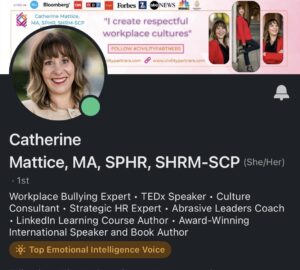Written by: Jennifer Areola
10,000 layoffs at Microsoft.
6,000 layoffs on Twitter – that’s a whopping 80% of their workforce!
Amazon isn’t far behind, with 18,000 layoffs
Even Meta is planning to cut another 10,000 jobs.
And Google? Well, they’ve let go of 12,000 of their own.
Job market is always shifting these days. Job security feels like it’s hanging by a thread. These layoffs are causing a lot of anxiety and making the future seem uncertain for so many people.
Today’s work landscape is quite a rollercoaster ride, with technology constantly leaping forward, economies going up and down, and unexpected curveballs like the COVID-19 pandemic. In this ever-changing scenario, job security has become a bit of a rare gem. But, let’s not forget, in the midst of all this unpredictability, there are chances to learn, evolve, and make the best of the situation.
Lessons we can all learn from layoffs
Lesson 1: Adaptability is Key
The first lesson we can draw from the current working world is the importance of adaptability. Being open to change, upskilling, and embracing new technologies can make employees more resilient in the face of layoffs. Continuous learning is not just a professional development option; it’s a necessity to stay relevant in today’s job market.
Lesson 2: Embrace Personal Development
Layoffs can be emotionally and financially challenging, but they also offer a unique chance for personal growth and self-discovery. When faced with unexpected job loss, individuals are forced to reevaluate their career goals and priorities.
Instead of just seeing it as a roadblock, consider it a pit stop. Use this time to look deep inside and figure out what truly drives you – your skills, passions, and values. Align your career with those aspirations.
Reach out to mentors or career experts who can help you explore new horizons or maybe even steer your career in a completely different direction.
Employee Retention is a Shared Responsibility
For organizations, retaining valuable employees is crucial in maintaining stability and continuity. The high cost and disruption of employee turnover can be a real headache, but there are ways to tackle it head-on through some forward-thinking strategies which follows:
Lesson 3: Prioritize Employee Well-being
One of the most important lessons for organizations is the need to prioritize employee well-being. Stress and burnout can really take a toll on productivity and team spirit. So, it’s smart to put resources into learning and development programs, be flexible with work arrangements, and foster a workplace where people support each other.
When your team is happy and healthy, they’re more likely to stay committed and perform at their best. Explore our range of training programs, from custom-tailored solutions for your leadership team to comprehensive offerings for your entire organization. And hey, if you’re dealing with abrasive leaders, we specialize in coaching them, too.
Lesson 4: Provide Career Growth Opportunities
Keeping your team engaged and dedicated often boils down to giving them room to grow right within your organization. Encouraging them to pursue further education and laying out a clear career path within the company can be a total game-changer. It’s not just about holding onto your top talent; it’s also about ramping up your organization’s overall skills and know-how. It’s a win-win!
But, have you ever considered delving into your employees sentiments? We can find out through a climate assessment. More than an engagement survey, an assessment allows us to understand exactly what is happening in your organization so that we can work with you to fix it.
Lesson 5: Transparent Communication
Companies should be upfront about the challenges they’re facing and the changes on the horizon. Regular updates about the company’s financial situation and future direction are key. This kind of transparency is like superglue for trust and can really help ease the anxiety that can run rampant during uncertain times.
HR plays a pivotal role—before, during, and after the crisis. Check out Catherine’s LinkedIn Learning course, Crisis Communication for HR to help you communicate with employees when crises occur and share one strong, unifying message.
Key Takeaway
The world of work these days is always shifting and changing. It’s a constant rollercoaster. In this kind of environment, it’s crucial for both individuals and organizations to be open to change, build resilience, and really look out for each other.
Sure, layoffs can hit hard, and they’re a tough reality. But here’s the thing: they don’t have to be the end of the line. Instead, they can be stepping stones that take us to brand new opportunities and help us grow.
if you’d like to have a chat about how we can help your organization, CLICK HERE and we’ll be in touch!
PS: Our Founder and CEO, Catherine Mattice has been recognized as “Top Emotional Intelligence Voice” on LinkedIn! Check out her profile to stay at the forefront of creating a positive work culture – click the follow button and get some amazing resources and valuable content!




